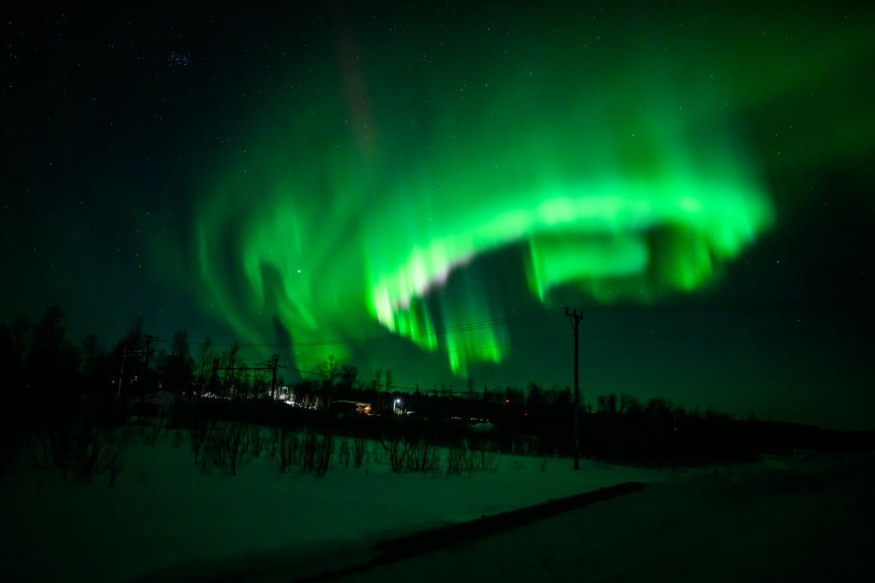
An extraordinary display of auroras lit up the skies over Alaska on November 22, featuring a rare "E-shaped" pattern intertwined with mysterious dark patches.
This captivating phenomenon, known as anti-auroras, left skywatchers and scientists alike in awe as it disrupted the typical flow of light in the atmosphere.
Rare E-Shaped Aurora Spotted in Alaska with Mysterious Dark Patches
Aurora hunter Todd Salat witnessed the spectacle at around 4 a.m. local time in southcentral Alaska.
He described the glowing formation as appearing suddenly, cycling through shapes, and lasting just a few minutes.
One particularly striking feature was the dark patches within the 'E' shape, which experts attribute to anti-auroras — an elusive phenomenon that creates voids in the glowing lights, NewsMinimalist said.
Unlike traditional auroras, which are caused by high-energy particles from the sun exciting gas molecules in Earth's atmosphere, anti-auroras represent the opposite effect.
These dark regions emerge when charged particles are pulled away, preventing the gas molecules from releasing light. The result is black curls, rings, or blobs punctuating the vibrant hues of auroras.
Auroras themselves occur when electrons bypass Earth's magnetic shield and energize atmospheric gases, creating ribbons of light.
The color depends on the type of gas and its altitude. While auroras predominantly grace the polar regions due to weaker magnetic fields, they have become increasingly frequent due to heightened solar activity associated with the sun's 11-year solar cycle.
Alaska's Anti-Aurora Sighting Highlights Decades of Space Research
Anti-auroras, on the other hand, form under very specific conditions. Scientists discovered their workings in 2001 using data from the European Space Agency's Cluster satellites.
According to LiveScience, these patches appear when solar storms strain Earth's magnetosphere, creating vertical structures in the atmosphere called ionospheric cavities.
In these regions, electrons are repelled into space, starving the atmosphere of the charged particles needed for light.
Although anti-auroras have been studied for decades, their unpredictable nature makes them a rare treat.
They typically last no more than 10 to 20 minutes and can appear in both the Northern and Southern Lights. With solar activity on the rise, however, sightings of these enigmatic dark patches might become more frequent in the coming years.
The Alaska sighting showcases the interplay of scientific discovery and natural wonder. As researchers delve deeper into phenomena like anti-auroras, events like this remind us of the mysteries still waiting to be uncovered in our skies.
© 2025 NatureWorldNews.com All rights reserved. Do not reproduce without permission.





